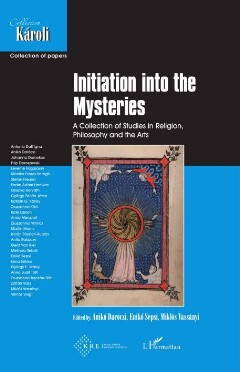Page 122 [122]
ANIKÓ DARÓCZI
to refer here to the ‘seat of the effects of love and attachment’.’° At the same
time, the heart is the seat of the memory (memoria). The addressee must
allow the words to penetrate deeply into her being. She must meditate on the
words and concentrate her attention on them so that they may have the desired
effect on her life. In the same vein, Letter 24 contains yet another noteworthy
passage, which suggests what else can happen in the heart that has taken into
itself the words spoken about God: the addressee should remember God and
carry Him in her heart and embrace Him “sweetly with an open, expectant
heart, always longing for His hearty sweetness and for the heartiness of His
hearty, sweet nature”” (italics mine).
This information indirectly sheds light on the practice of the reader of
Hadewijch’s letters and lends support to the approach to the texts taken in this
study. First, it appears that meditative reading is considered to be the norm.”
We are also given to understand that reading involves the body and the senses.
Reading the words, remembering them, ruminating on them and allowing them
to speak to the heart are the constituent elements of meditation. The meditator
reads the text slowly, divided into segments with the aim of memorising them.
This can entail word-for-word memorisation, or concentration on the keywords
of the text, so that the content of the larger units remained imprinted in the
memory. But reading often meant reading aloud. ‘Reading’ thus also means
‘hearing’, as one would read with and for the ears, so to speak. As for the
influence of what is read upon the senses, we must also bear in mind the power
of sound, of the word that is spoken and thus heard.
About the influence of the words heard, Hadewijch says at the end of
Letter 25:
Once I heard a sermon which spoke of Saint Augustine. At the moment when
I heard it, I became so inflamed within, that I felt as if everything on earth was to
be burned by the flame which I felt within me. Love is all. (Letter 25, 34-39)
v gheseghet hebbe. Want menne mach nieman Minnen leren, Mer dese dogheden volleiden
den mensche ter Minnen. (Letter 24, 104-111).
10 Verdam, Middelnederlandsch Woordenboek, pt. II, col. 387-392.
1 Cf. Carruthers 1994, 48-49 and Jager 2000.
’Memorileke seldi gode van herten draghen. Ende lieflec behelsen met openre hopender
herten, ende gapen altoes jeghen sine herteleke soetheit Ende ieghen die hertelecheit siere
herteleker soeter naturen. Letter 24, 64-71. Italics mine.
On the reading method of lectio divina (ruminating on and tasting the sweetness of the
words) as this appears in—for instance—Jean de Fécamp (ca. 990-1078), see Gehl 1987 and
Leclerq and Bonnes 1946. On the body of the reader as a musical instrument on which the
voces paginarum resound, and on how to practice lectio spiritualis, see Illich 1998. See also
Duncan Robertson: “John of Fécamp’s Confessio theologica ... and its various revisions offer
what may be described as original ‘meditations’ on sacred writings, quoted at length and
focused through extended first-person prayers. In these works, reading flows into writing,
the quotations into the quoting texts, in an unbroken continuum.” Robertson, 133.
+ 120 ¢
Daréczi-Sepsi-Vassänyi_Initiation_155x240.indb 120 6 2020.06.15. 11:04:16

